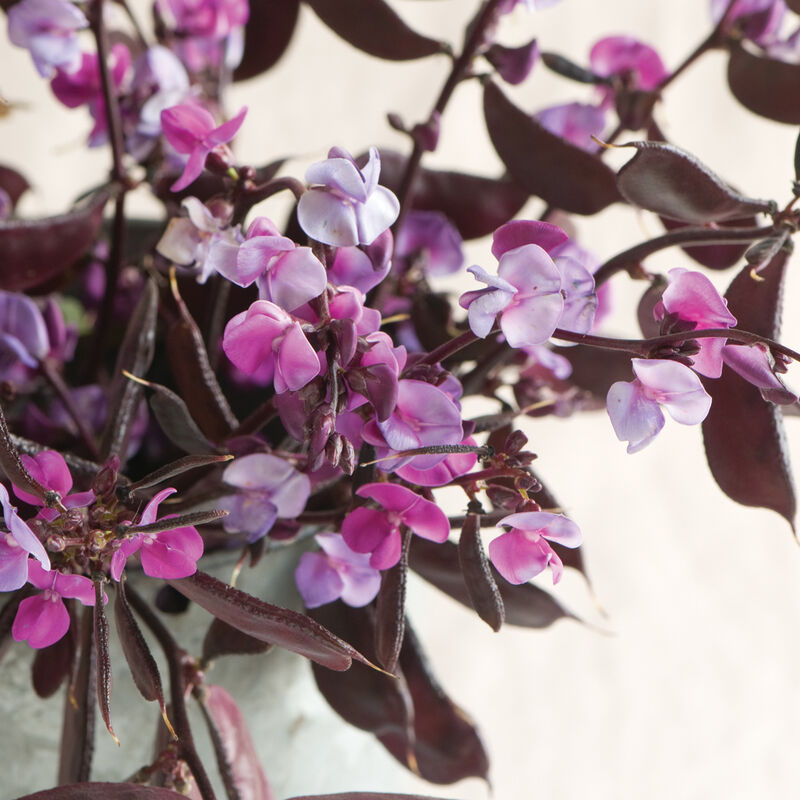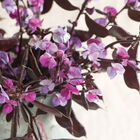Ruby Moon Hyacinth Bean Seed
Ruby Moon Hyacinth Bean Seed
Provides color all season.
Purple stems, lilac-rose blossoms, and shiny 2–3" magenta pods. While all parts of the plant are edible, we recommend boiling the mature seeds twice before eating. Used in Asian, Thai, and Indian cuisine. Blooms and pods are useful as cut flowers; pods may be dried. Also known as bonavist-bean, and lablab-bean. Tender perennial in Zones 9–10. Best grown as an annual elsewhere.Specs:
DAYS TO GERMINATION:
5-12 days at 65-70°F (18-21°C)SOWING:
Transplant - Sow 4-6 weeks before planting out. Direct seed - After danger of frost. Sow seeds ½" deep. Once seedlings have developed first true leaves, thin as needed.LIGHT PREFERENCE:
Sun.PLANT HEIGHT:
10-20'. Trellis or other support required.PLANT SPACING:
6-12".HARDINESS ZONES:
Zones 9-10.HARVEST:
Flowers - 80% of flowers on stem are open. Pods - When half on stem are shiny and firm. Edible flowers - Fully open.SOIL REQUIREMENTS:
Moderately fertile soil.USES:
Cut flower. Seeds, young leaves, and flowers are edible. Quick cover for arbors, walls, fences, and trellises.SCIENTIFIC NAME: Dolichos lablabALTERNATE NAMES: Bonavist-bean, lablab-beanJohnny's is committed to your success, every step of the way.
We want you, our customer, to be 100% satisfied with all of our seeds, tools, and supplies.
If anything you purchase from us proves unsatisfactory, we will either replace the item or refund the purchase price.







